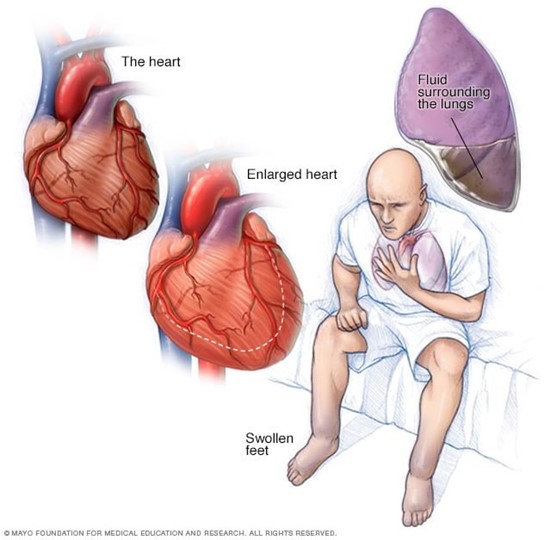A nurse is teaching a client who has a new diagnosis of venous insufficiency. Which of the following instructions should the nurse include?
"Apply ice packs to your legs."
"Place your legs in a dependent position while in bed."
"Remain on bed rest."
"Use elastic stockings."
The Correct Answer is D
Using elastic stockings is an effective way to improve venous return and prevent edema, stasis, and ulceration in clients who have venous insufficiency. The stockings should be applied before getting out of bed and worn throughout the day.
"Apply ice packs to your legs." is not appropriate, as ice packs can cause vasoconstriction and impair blood flow to the legs, worsening the condition.
"Place your legs in a dependent position while in bed." is not advisable, as dependent position can increase venous pressure and fluid accumulation in the legs, leading to edema, pain, and skin breakdown
"Remain on bed rest." is not necessary, as bed rest can reduce muscle contraction and impair venous return. The client should be encouraged to perform regular exercise, such as walking, to enhance circulation and prevent complications.
Nursing Test Bank
Naxlex Comprehensive Predictor Exams
Related Questions
Correct Answer is A
Explanation
a.This is appropriate as regular, moderate exercise can help improve cardiovascular health and functional capacity in clients with heart failure. It is essential to discuss appropriate types and levels of exercise based on the individual’s condition.
b.This is incorrect because clients should be instructed to notify the provider if they gain 1 kg (2.2 lbs) in one day or 2 kg (4.4 lbs) in one week. A weight gain of 0.5 kg is not typically a threshold for concern.
c. Take diuretics early in the morning and before bedtime is wrong because it may disrupt the client's sleep patern and cause nocturia. The nurse should advise the client to take diuretics early in the morning and avoid taking them in the evening or at night, unless prescribed otherwise.
d. Take naproxen for generalized discomfort is wrong because naproxen is a nonsteroidal anti-inflammatory drug (NSAID) that can worsen heart failure by causing sodium and water retention, increasing blood pressure, and reducing the effectiveness of diuretics and other heart failure medications. The nurse should advise the client to avoid NSAIDs and use acetaminophen or other alternatives for pain relief, as prescribed by the provider.

Correct Answer is C
Explanation
A. Asthma typically presents with wheezing, shortness of breath, and chest tightness. While dyspnea is a symptom, tachycardia and weak peripheral pulses are not characteristic findings associated with asthma.
B. Aortic valve regurgitation may cause dyspnea and fatigue, but it is more commonly associated with bounding pulses and diastolic murmur rather than weak peripheral pulses.
C. Heart failure is characterized by symptoms such as dyspnea, fatigue, tachycardia, and weak peripheral pulses due to reduced cardiac output and poor perfusion to the extremities. The nurse should recognize these signs as indicative of heart failure.
D. Aortic stenosis can lead to symptoms like dyspnea and fatigue; however, it typically presents with a triad of symptoms including exertional dyspnea, angina, and syncope, rather than weak peripheral pulses.
Whether you are a student looking to ace your exams or a practicing nurse seeking to enhance your expertise , our nursing education contents will empower you with the confidence and competence to make a difference in the lives of patients and become a respected leader in the healthcare field.
Visit Naxlex, invest in your future and unlock endless possibilities with our unparalleled nursing education contents today
Report Wrong Answer on the Current Question
Do you disagree with the answer? If yes, what is your expected answer? Explain.
Kindly be descriptive with the issue you are facing.
